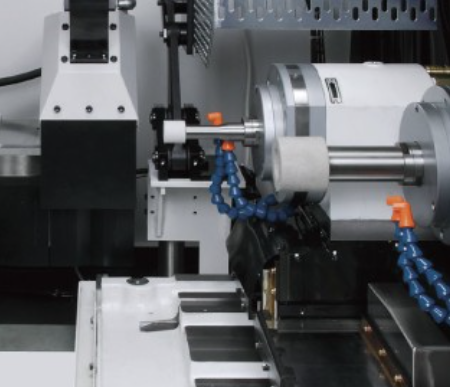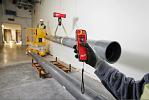Application Engineer, Grinder Products
- FMA
- The Fabricator
- FABTECH
- Canadian Metalworking
ID Grinding: Success Starts With the Quill
Here are some items to consider when selecting the correct grinding quill.
- By Rob Titus
- November 20, 2015
There are many items to consider when developing an efficient and consistent ID grinding operation. Selecting the correct grinding wheel size/specification, and the correct rpm range for the ID grinding wheel spindle are all important details. One item that is often overlooked is the grinding quill.
The grinding quill is threaded into the grinding wheel spindle and is what holds the grinding wheel. A highly rigid ID grinding machine with high precision ID grinding wheel spindles requires a rigid and precise grinding quill.
What to Look for in a Grinding Quill
Below are some items to consider when selecting the correct grinding quill:
- Precision: Depending on the application, grinding quills may rotate at speeds in excess of 100,000 rpm. It is important that all features on the quill are ground to very tight tolerances. After a grinding quill is mounted in the ID spindle, the runout of the OD of the quill (near the grinding wheel) should be less than .0002”. Quills should also be balanced at the max operating speeds that they will be run at.
- Size (length and diameter): This depends on the length and diameter of the ID being ground as well as the size of the grinding wheel. A larger diameter quill will be more rigid, but the amount that can be dressed off of the grinding wheel will be reduced, thus reducing wheel life. The quill length should be as short as possible, but has to be long enough to allow the grinding wheel to reach the back of the bore being ground. Ample space needs to be allowed for coolant nozzles to be placed near the wheel spindle nose as well.
- Quill Material: In most cases this will depend on the length to diameter ratio. This may also depend on size/weight of quill and the RPM required.
- Tungsten Carbide- While these are more expensive, they are the most rigid and will have the least amount of deflection.
- Heavy Metal- While not as stiff as carbide, these do offer very good vibration dampening characteristics.
- Hardened Steel- These are the least expensive but will have the most deflection. Not recommended when quill length to diameter ratios is 5:1 or greater.
- There are other materials/combination of materials that are also available. These include carbon fiber/steel combination, steel/tungsten carbide, ceramics, and Ferro-Tic.
Make It or Break It
The grinding quill can make or break an ID grinding process. It is very important to choose the correct grinding quill design to get the most out of your ID grinding application.Are you looking to improve the efficiency and consistency of your ID grinding operation? Please feel free to contact us, or your local Okuma distributor and we’d be happy to help. Your comments below are also welcome
Rob Titus is Applications Engineer, Grinder Products, Okuma America Corporation.
This blog originally appeared on www.okuma.com. It has been republished on Canadian Metalworking’s website with permission from the Okuma America Corporation.
subscribe now


Keep up to date with the latest news, events, and technology for all things metal from our pair of monthly magazines written specifically for Canadian manufacturers!
Start Your Free SubscriptionAbout the Author
- Industry Events
MME Winnipeg
- April 30, 2024
- Winnipeg, ON Canada
CTMA Economic Uncertainty: Helping You Navigate Windsor Seminar
- April 30, 2024
- Windsor, ON Canada
CTMA Economic Uncertainty: Helping You Navigate Kitchener Seminar
- May 2, 2024
- Kitchener, ON Canada
Automate 2024
- May 6 - 9, 2024
- Chicago, IL
ANCA Open House
- May 7 - 8, 2024
- Wixom, MI






















